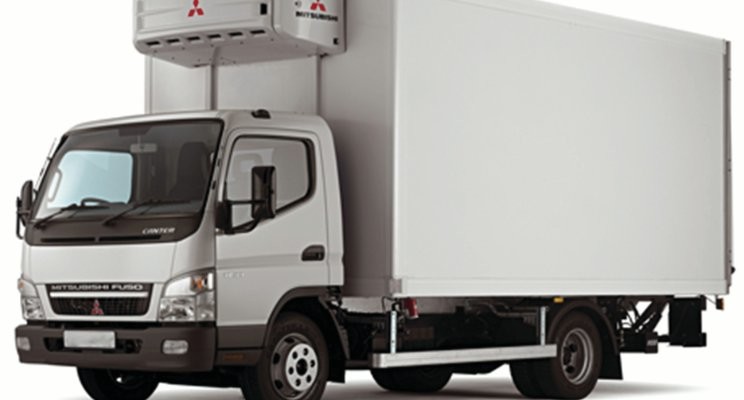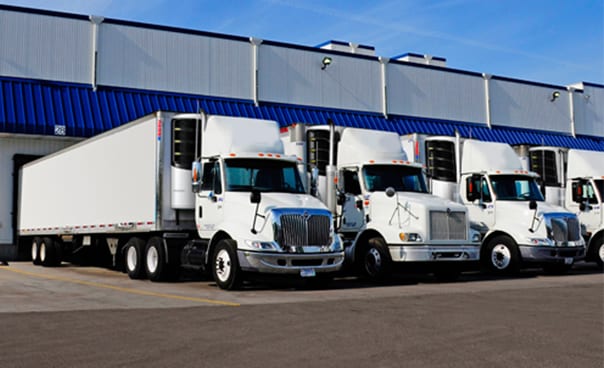Top Transport Refrigeration Companies Supplying Advanced Cold Chain Solutions
Top Transport Refrigeration Companies Supplying Advanced Cold Chain Solutions
Blog Article
Exactly How Chilled Trucks Operate to Guarantee Safe and Effective Distribution of Perishable Item
Chilled vehicles play a critical function in the supply chain, making certain that subject to spoiling items are transported securely and successfully. Making use of innovative refrigeration modern technologies and durable insulation, these automobiles preserve exact temperature control, which is important for preserving the top quality of delicate items.
Overview of Refrigerated Trucks
Chilled vehicles, commonly described as reefer vehicles, play an important role in the transport of disposable products across different industries. These customized automobiles are designed to maintain particular temperature arrays, making sure that items such as fresh produce, milk products, meat, and drugs stay secure for intake and reliable use. The procedure of cooled trucks is important in decreasing wasting and extending the life span of temperature-sensitive products.
Reefer vehicles are furnished with insulated freight areas that can sustaining reduced temperature levels, which can be changed according to the sort of goods being transferred. The lorries usually utilize a refrigeration system powered either by the automobile's engine or an independent power source, allowing for regular temperature control throughout transportation.
In addition to temperature level upkeep, these vehicles are typically made with sophisticated monitoring systems to track the inner environment, ensuring compliance with health and wellness regulations. Refrigerated vehicles contribute considerably to the supply chain, allowing prompt deliveries to restaurants, customers, and stores. Their essential role highlights the relevance of reliable transportation options in today's international market, where quality is paramount.
Key Refrigeration Technologies
Keeping optimum temperature level control in cooled vehicles counts on a number of essential refrigeration innovations that improve performance and integrity. Among the most common systems is the vapor-compression refrigeration cycle, which utilizes a refrigerant to soak up warmth from the truck's interior, decreasing the temperature level. This procedure involves a compressor, condenser, growth valve, and evaporator, operating in tandem to distribute the refrigerant and preserve a consistent environment.
One more significant innovation is the use of eutectic plates, which store and launch thermal energy. These plates are full of a phase-change product that solidifies at a specific temperature level, offering a stable air conditioning source. This approach not only improves power efficiency yet also reduces the requirement for continuous power supply throughout transit.
Additionally, advanced insulation materials, such as polyurethane foam, significantly improve the thermal performance of cooled trucks, reducing temperature level changes during unloading and filling. Some modern-day chilled vehicles also incorporate telematics systems, permitting for real-time tracking of temperature level and performance, thus guaranteeing compliance with safety and security criteria. With each other, these innovations guarantee the safe transportation of disposable products while optimizing functional performance and reducing energy intake.
Temperature Level Control Mechanisms
Reliable temperature company website control devices are important in ensuring the stability of perishable products throughout transport. Cooled vehicles utilize sophisticated technologies to preserve regular temperature arrays, preventing putridity and making certain product security - refrigerated truck companies.
In addition, modern refrigerated trucks are equipped read here with digital thermostats and programmable temperature level monitoring systems. These systems permit real-time monitoring of inner temperature levels, providing notifies if the temperature level differs the predetermined variety. This ability is crucial for compliance with health and safety guidelines.
Insulation likewise plays a crucial duty in temperature control. Top notch insulation products decrease warmth exchange, maintaining the wanted inner conditions. Air flow administration within the cargo area is engineered to make certain consistent temperature level distribution, avoiding hotspots that could compromise item stability.
Finest Practices for Loading

This method allows the temperature level control system to support, creating an ideal setting for disposable products. Avoid straining and obstructing vents, as this can lead to temperature variations and hotspots.
Using pallets or shelving can aid in organizing items, making certain that much heavier items are put near the bottom to avoid squashing lighter products. Additionally, it is important to set apart different kinds of goods, particularly those with varying temperature level demands, to avoid cross-contamination and wasting.
Lastly, protecting the load with bands or nets will protect against motion throughout transit, thus reducing the threat of damage and preserving the honesty of temperature-sensitive products. By adhering to these best practices, drivers can make sure reliable and secure delivery of subject to spoiling goods while making best use of the performance of their cooled vehicles.
Challenges and Solutions in Transport
Transporting goods in cooled vehicles presents several difficulties that can influence the integrity of temperature-sensitive products. One considerable concern is temperature level fluctuations, which can occur because of devices breakdown or inappropriate loading practices. These changes can cause perishing, compromising the quality of perishable products. Furthermore, road problems and hold-ups can additionally aggravate temperature control concerns, especially throughout expanded transit times.
Advanced telemetry can give real-time temperature level information, informing chauffeurs to any kind of anomalies. Training personnel on finest loading and unloading practices can minimize the danger of temperature variances.
Another trick service entails path optimization. Making use of GPS and website traffic management modern technologies can help chauffeurs pick the most effective paths, minimizing transportation times and reducing direct exposure to adverse problems. Teaming up with trustworthy logistics companions who prioritize cold chain honesty is likewise vital for guaranteeing that items stay within required temperature varieties.

Verdict
In final thought, cooled trucks play a vital duty in the effective and secure transportation of like it perishable products. Using innovative refrigeration technologies and effective temperature control systems makes sure that items stay within called for temperature varieties.

Report this page